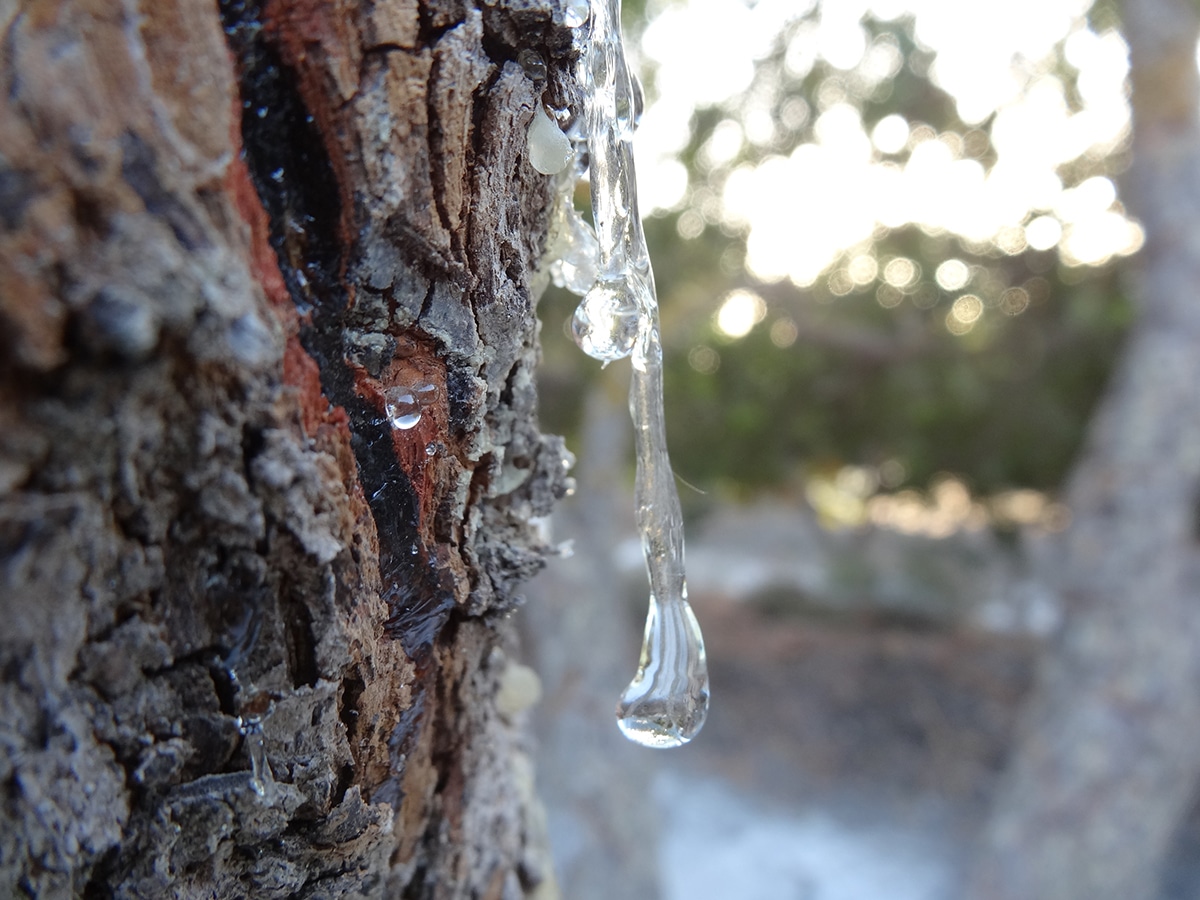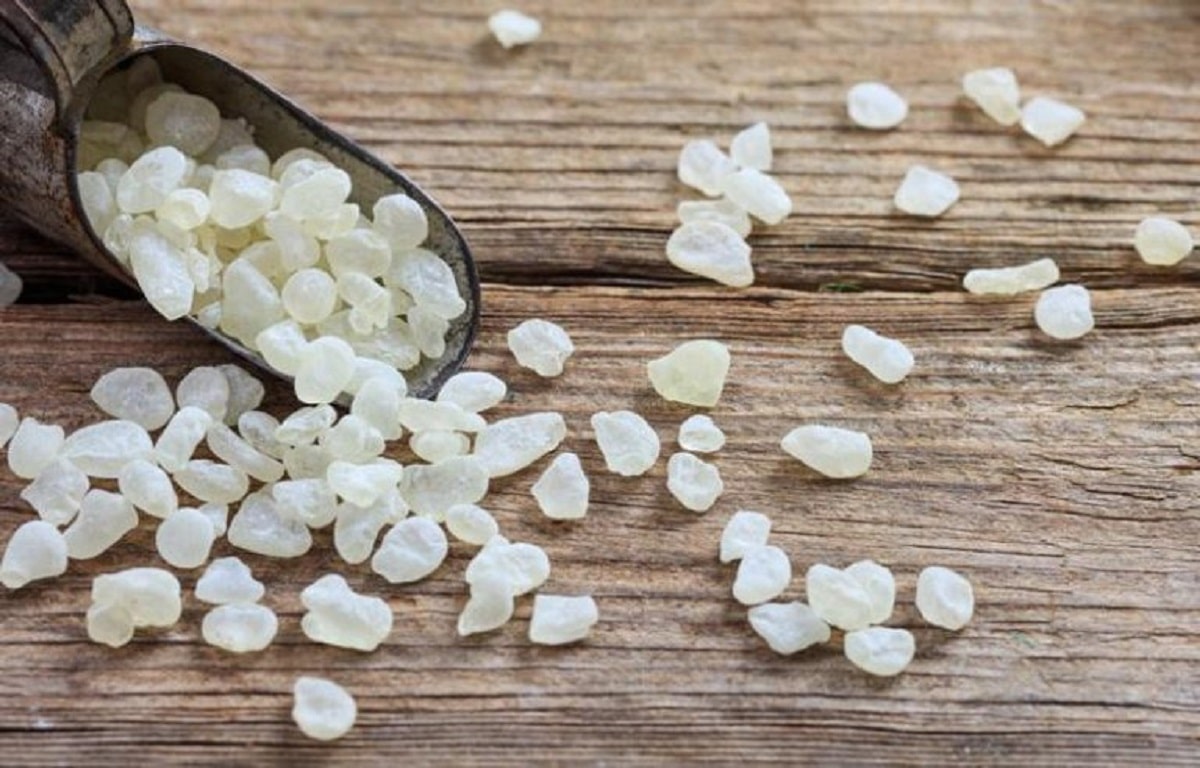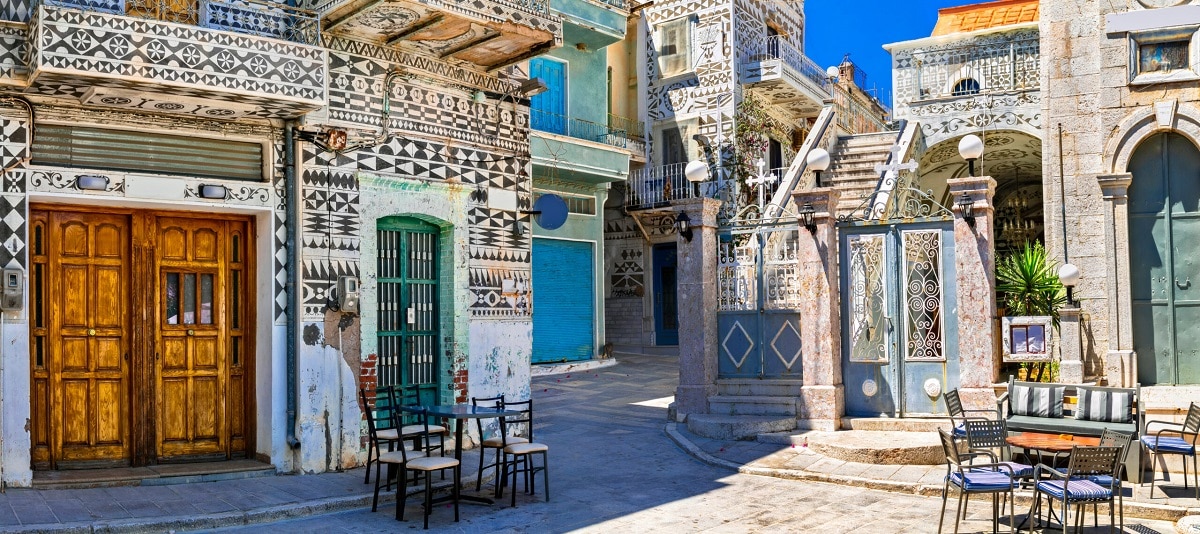
It is one of the most typical products of Greece and comes from the beautiful Chios island: la mastic resin, also known in Spanish as mastic or mastic.
This highly aromatic natural resin comes from a kind of mastic (pistacia lentiscus) that only grows in the south of this island. Its unique properties and its singular aroma are the result of the special characteristics of the climate of this part of the Aegean and of the composition of the land in this part of Chios. Its quality is much higher than that of other resins such as pine or almond.
A product with many uses
The use of this resin dates back to ancient times. It has been documented that in the Classic Greece was used to embalm the dead, while in the Roman age It was a product very appreciated by the ladies of noble families, who chewed it to eliminate bad breath and also made it serve as a teeth whitener. Precisely the Spanish word "chew" derives from this old use of mastic resin.
In the times of the Ottoman Empire, mastic was considered a luxury product. His theft was punishable by death. The Turkish name of the island is Adasi, Meaning "Rubber island".

Mastic resin
Already in more recent times, the possible applications of this prodigious resin multiplied, becoming popular throughout the world. Today for example, it is used in the manufacture of certain musical instruments and is present in the composition of dyes and paints. It is also used as a digestive and in the manufacture of cosmetics. In total, more than 60 different uses of this product have been cataloged.
Also in the gastronomic section, mastic resin has a lot to say, with a prominent role in Greek, Cypriot, Syrian and Lebanese cuisines. Without going any further, the famous Greek liquor chews contains a small but significant amount of it. But also, it is customary in Chios and in other parts of Greece to add a few drops of resin to breads, cakes, ice cream, cakes and cookies.
Chios mastic is an essential ingredient of the chrism, the holy oil used for anointing in Orthodox churches.
How is mastic resin grown?
Many centuries have passed, but the mastic resin collection process has hardly changed from then until today. In the months of August and September, growers make a series of incisions in the bark of the tree. The gelatinous sap then begins to flow outward, falling off in the form of large, shiny tears.
After about 15 or 20 days the resin falls at the foot of the tree, dries and forms a solid layer that is scraped off by the growers and washed with fresh water. The following video explains the process very well:
The Chios mastic resin culture was designated as Intangible Cultural Heritage of Humanity by UNESCO on November 27, 2014.
Varieties of mastic resin
There are two main varieties of mastic resin. They differ from one another by their degree of purity:
- Common mastic resin, darker in color, containing many impurities. Even so, it is highly appreciated for its healthy properties for digestive function.
- Teardrop mastic resinPale amber in color, rough to the touch and glassy in appearance. It is quite ductile and extremely aromatic. It solidifies in the mastic branches and does not fall to the ground, which is why it is purer than common mastic. The price of a kilogram of teardrop mastic resin is around 150 euros.
Mastichochoria: the towns of resin
The southern area of Chios is known by the name of Mastichochoria (Greek, "mastic peoples"). There are a total of 24 localities whose production is encompassed within a Protected Designation of Origin by the European Union.

Pyrgi, the largest town in the Mastichochoria region
Among the localities that make their living from the cultivation of mastic, we must mention Pyrgi, Mesta, Armolia, Kalamoti y kalimasia, Among others.
The production of mastic resin on the island is in the hands of a single cooperative founded in 1938. This organization also manages the Chios Resin Museum, which offers a permanent exhibition on the production of this natural treasure, its history, its cultivation techniques and the different uses that are given to it today.
On August 18, 2012, a gigantic forest fire in Chios that forced the evacuation of five towns in the south of the island and that devastated about 7.000 hectares of forests and farmland. The devastation was especially damaging to the Mastichochoria region, where around 60% of the mastic were lost. The mastic resin production industry suffered a Hard hit and was only able to regain pre-disaster levels a few years ago.